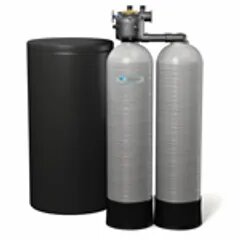How to Identify and Remove Contaminants from Drinking Water
Clean and safe drinking water is a fundamental requirement for a healthy life. However, the unfortunate reality is that many sources of drinking water are contaminated with various pollutants. These contaminants can have adverse effects on our health, so it’s crucial to be aware of them and understand how to remove them from our water supply. In this blog, we’ll explore some common contaminants found in drinking water and the methods for their removal, emphasizing safe and reliable solutions.
- Chlorine and chloramines
Chlorine and chloramines are commonly used disinfectants in municipal water treatment facilities to kill harmful bacteria and pathogens. While they play a vital role in making our water safe to drink, their presence can result in an unpleasant taste and odor.
Removal Method: Activated carbon filters, often found in water filter pitchers and faucet attachments, are effective at removing chlorine and chloramines. These filters work by adsorbing the contaminants onto their surface, leaving you with cleaner and better-tasting water.
- Lead
Lead contamination in drinking water can occur when water passes through lead pipes or fixtures. Exposure to lead can have severe health consequences, especially for children and pregnant women.
Removal Method: To address lead contamination, it’s essential to identify and replace any lead pipes or fixtures in your plumbing system. Additionally, installing a certified lead-removing water filter can further reduce lead levels, ensuring your water is safe to consume.
- Arsenic
Arsenic is a naturally occurring element that can leach into groundwater, making it a common contaminant in well water. Chronic exposure to arsenic has been linked to various health problems, including cancer.
Removal Method: Reverse osmosis systems are highly effective at removing arsenic from water. These systems use a semipermeable membrane to remove a wide range of contaminants, including arsenic, ensuring that your drinking water is arsenic-free.
- Bacteria and viruses
Bacteria and viruses can find their way into drinking water sources through various means, including contamination from animal waste or faulty sewage systems. Consuming water contaminated with these microorganisms can lead to gastrointestinal illnesses.
Removal Method: Boiling water is a simple and effective way to kill most bacteria and viruses. Alternatively, UV purifiers and water filtration systems with a microbial filter can provide long-term protection against these contaminants.
- Fluoride
Fluoride is added to many municipal water supplies to promote dental health. However, excessive fluoride levels can lead to dental fluorosis and other health concerns.
Removal Method: If you’re concerned about fluoride levels in your water, consider using a water filter that is specifically designed to reduce fluoride. Activated alumina filters and reverse osmosis systems are effective options for fluoride removal.
- Nitrates
Nitrates often enter the water supply through agricultural runoff or faulty septic systems. High nitrate levels can pose health risks, especially for infants and pregnant women, as they can interfere with oxygen transport in the blood.
Removal Method: Ion exchange filters and reverse osmosis systems are effective at reducing nitrate levels in drinking water. Regular testing of well water for nitrate levels is also advisable if you rely on a private well.
- Heavy Metals (e.g., Mercury, Cadmium)
Heavy metals like mercury and cadmium can contaminate water sources through industrial pollution. Prolonged exposure to these metals can have serious health consequences.
Removal Method: Activated carbon filters and ion exchange systems are effective at removing certain heavy metals. However, for comprehensive heavy metal removal, especially for mercury, a reverse osmosis system is a more reliable choice.
- Sediments and particles
Sediments and particles in water can result in cloudy or turbid water. While they may not necessarily be harmful on their own, they can affect the taste and appearance of your drinking water.
Removal Method: Filtration systems with sediment filters or whole-house filtration systems can effectively remove sediments and particles, providing you with clear and clean water.
Conclusion
Ensuring the safety of your drinking water is paramount, given the potential health risks associated with various contaminants. While there are various methods available for removing these contaminants, it’s essential to choose a solution that suits your specific water quality concerns.
Regular water testing is a crucial first step in identifying the contaminants present in your water supply. Once you understand your water’s composition, you can select the appropriate filtration or treatment system to address the specific contaminants you need to remove.
Remember, maintaining your water treatment system is vital to its effectiveness. Follow the manufacturer’s guidelines for filter replacement or system maintenance, and consider professional testing and maintenance services for peace of mind.
In conclusion, while it’s essential to be aware of common contaminants in drinking water and how to remove them, it’s equally important to prioritize the health and safety of your household by investing in reliable water treatment solutions. Clean and safe drinking water in Richmond is a basic necessity, and by taking the right steps, you can ensure that your family has access to the best quality water possible.





